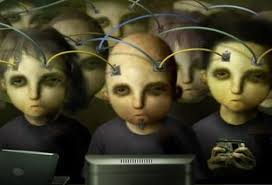Will a developmental-learning model of addiction (e.g., Maia Szalavitz, Gabor Maté , Stanton Peele, and me) ever make peace with the disease model? That would be a happy ending! Nora Volkow and I could eat muffins together…or maybe have a glass of wine. We could establish a space for sharing data and ideas, working together toward an explanation that incorporates the best of both worlds.
Yet I don’t think it’s in the cards. Not because the disease model is so far off base scientifically. In fact, where the brain in concerned, the distinction between learning and pathology isn’t always obvious, as epitomized by ADHD, autism, bipolar disorder, even schizophrenia. There’s got to be some allowance for overlap — doesn’t there?
It’s not that the disease model is so wrong, it’s that the baggage it carries may never fit in the same home as the learning model. Here’s what I mean:
Society’s understanding of addiction can be seen as advancing through three stages.
First, beginning in the Victorian era, addicts were considered morally flawed and indulgent. We could call that the “sin” model. Consequently, the appropriate response to addiction was to punish the addict through scorn, isolation, and maybe even jail time. Through shame and retribution, the addict might, with luck, go back to being good.
The second stage was the era of the disease model, beginning in the middle of the 20th century. The change was driven by the emphasis on helplessness in Alcoholics Anonymous, beginning in the 30s, and the evolution of residential treatment centers that stressed obedience to therapeutic regimes, beginning  in the 50s. Finally, the proliferation of neuroscience in the 80s and 90s put a seal on the package by pointing to a diseased organ, namely the brain. Now specific neural changes could be pinpointed as the source of addiction, and the disease model ruled the roost.
in the 50s. Finally, the proliferation of neuroscience in the 80s and 90s put a seal on the package by pointing to a diseased organ, namely the brain. Now specific neural changes could be pinpointed as the source of addiction, and the disease model ruled the roost.
According to the disease model, the appropriate solution to addiction was medicine. Specifically, addicts were to be urged to follow the advice handed down by medical practitioners. Rather than confess to being immoral, addicts were advised to confess to being incapable. The only hope to control addiction was to accept a regime imposed by an authority. In other words, to subdue a problem located on the inside, you needed to take orders from the outside. It is this baggage that seems destined to clash with the mindset of a third, more progressive view of addiction.
The third stage in our understanding of addiction is the learning model: a developmental sequence of events that gives rise to habitual patterns of thinking and feeling. This view of addiction admits the potency of social factors, like isolation and dislocation, as catalogued by Bruce Alexander. It makes sense of the impact of adversity in early development, as emphasized by Gabor Maté and Maia Szalavitz. And it allows for the influence of societal and cultural issues, as portrayed by Carl Hart and Johann Hari.
According to a developmental-learning definition, the appropriate response to addiction is neither shame and isolation nor submission to a therapeutic regime. Rather, it is further growth. The solution to addiction can’t be a medical regime that returns the addict to some previous level of normality. Nor can it be disempowerment, intended to counter built-in character flaws. Rather, people emerge from addiction through ongoing development. In this light, addiction can be viewed as a stage of individual development, and it must therefore be addressed through  individual efforts based on individual perspectives, goals, and capacities. A developmental-learning model of addiction suggests that positive change must be pursued from within.
individual efforts based on individual perspectives, goals, and capacities. A developmental-learning model of addiction suggests that positive change must be pursued from within.
The final two stages in our understanding of addiction, the disease model and the learning model, have both achieved some of their plausibility on the basis of brain research. But the role of neuroscience in these two stages of conceptualization could not be more different. Neuroscience helped shore up the  disease model by identifying deviations from what is considered standard neural architecture, a project we could call “neuronormativity.” Remember: the target was a cure. In contrast, the developmental-learning model of addiction embodies an emerging understanding of neuroplasticity. This replaces the search for normality with an emphasis on the brain’s capacity to change.
disease model by identifying deviations from what is considered standard neural architecture, a project we could call “neuronormativity.” Remember: the target was a cure. In contrast, the developmental-learning model of addiction embodies an emerging understanding of neuroplasticity. This replaces the search for normality with an emphasis on the brain’s capacity to change.
Thus, both models borrow something from the brain—a detailed breakdown of measurable biological events. But they are fundamentally different in orientation, and they perceive the brain in such very different ways that it’s hard to imagine how they might be reconciled. It’s the same problem that’s appeared in the tension between developmental psychology and mainstream psychiatry over many decades. The brain is either a normative thing that can go wrong and then be repaired, or it is an open system that can develop along diverse trajectories, integrating the meaning of experience according to its own expertise.
Addiction is one of those trajectories, but then so is progress beyond addiction.
NOTE TO READERS: I do try to respond to most of the comments in the comment section following each post, unless there is already a dialogue going and/or I have little or nothing to add. But I can’t always keep up with the volume of comments (volume = GOOD!) I’ll have an easier time responding, and so will others, if you keep your comments relatively succinct. Try for two or three paragraphs, max. Longer “essays” can be very thoughtful and informative, but they take time to consider and respond to intelligently. That’s the trade-off.

Leave a Reply to Lew Gervais Cancel reply